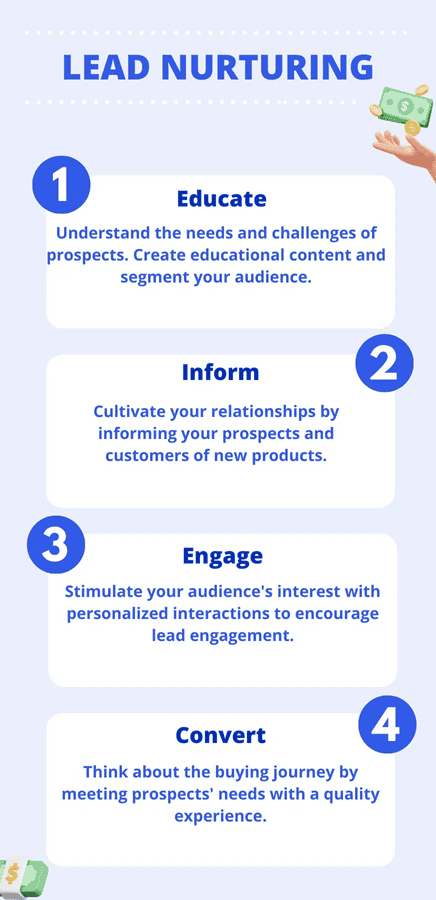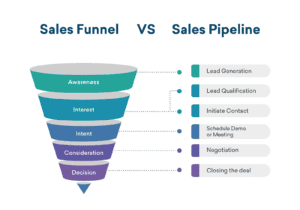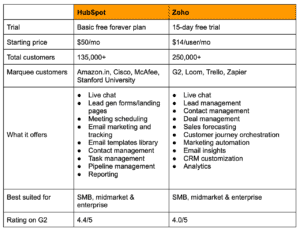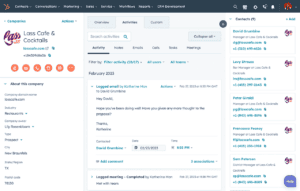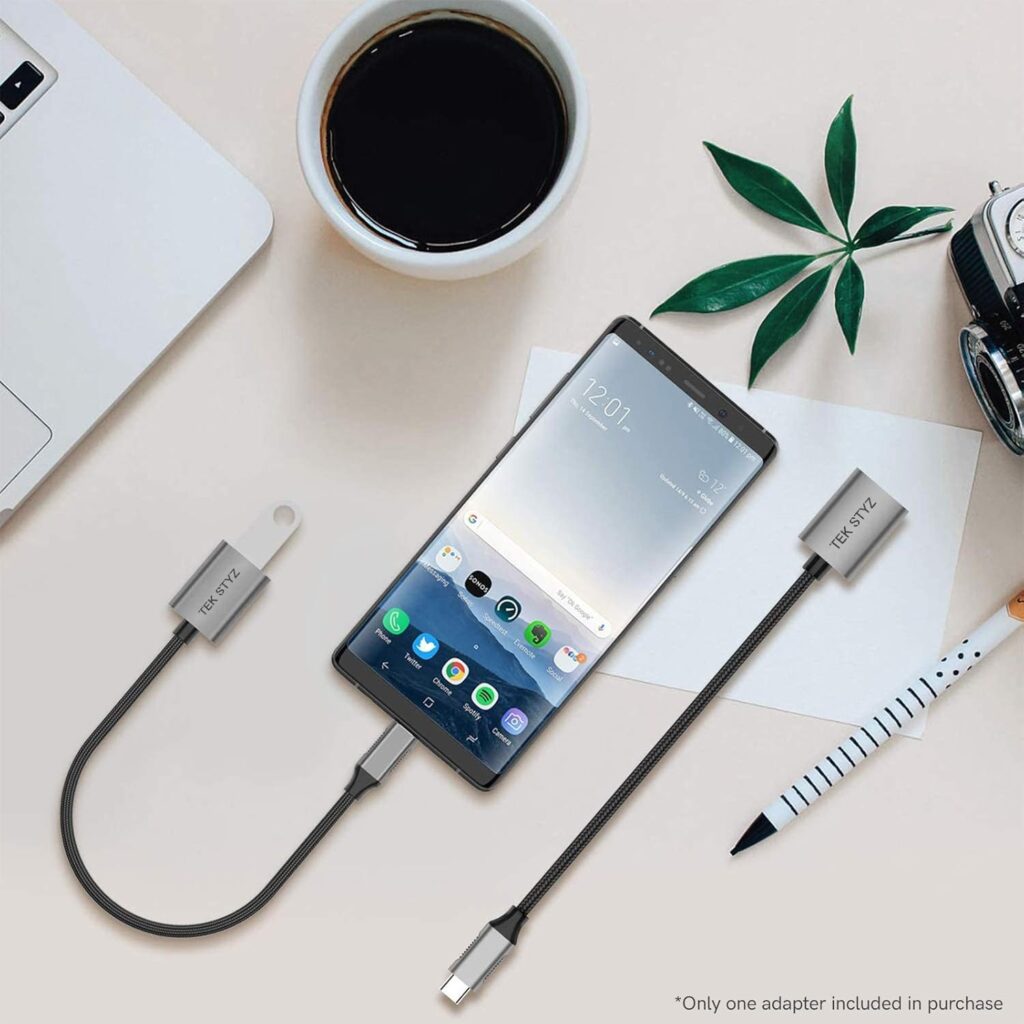Mastering Lead Nurturing: A Guide to Building Stronger Sales Relationships
Lead nurturing is a vital aspect of any sales strategy. It’s the process of developing and strengthening relationships with potential customers at every stage of the sales funnel. By providing valuable content and personalized experiences over time, businesses can convert prospects into loyal customers.
In this guide, we’ll explore the importance of lead nurturing, the strategies that work, and how you can optimize your lead nurturing efforts to boost conversions and drive growth.
Why Lead Nurturing Matters
In today’s competitive marketplace, most leads aren’t ready to make an immediate purchase. According to recent studies, up to 50% of leads are qualified but not yet ready to buy. This is where lead nurturing comes in—helping you build trust and stay top-of-mind until the prospect is ready to make a decision.
Benefits of Lead Nurturing
- Increased Conversions: By staying engaged with leads over time, you increase the likelihood of converting them into customers.
- Shortened Sales Cycles: Nurtured leads move through the sales funnel more efficiently, leading to quicker conversions.
- Stronger Relationships: Lead nurturing allows you to build meaningful relationships, which can result in repeat business and referrals.
- Higher Revenue: Studies show that nurtured leads make 47% larger purchases than non-nurtured leads.
Key Components of a Successful Lead Nurturing Strategy
1. Segmentation
Not all leads are the same. One of the first steps in creating an effective lead nurturing strategy is to segment your audience based on factors such as behavior, demographics, or where they are in the sales funnel. This allows you to tailor your messaging and content to resonate with each group, improving the relevance and effectiveness of your efforts.
2. Personalized Content
Generic, one-size-fits-all messaging won’t cut it when it comes to lead nurturing. Personalized content is key to engaging your leads and moving them closer to a buying decision. By leveraging data such as past interactions, behaviors, and preferences, you can deliver the right message at the right time.
Some examples of personalized content include:
- Tailored email campaigns based on the lead’s industry or interests.
- Product recommendations based on browsing behavior.
- Personalized offers and discounts.
3. Multi-Channel Engagement
Don’t limit your lead nurturing to just one channel. The most successful strategies involve engaging leads through multiple touchpoints, such as:
- Email Marketing: Automated email sequences are a powerful way to nurture leads over time.
- Social Media: Stay visible by interacting with your leads on platforms like LinkedIn or Twitter.
- Content Marketing: Share relevant blog posts, case studies, or webinars to demonstrate your expertise.
- Retargeting Ads: Keep your brand top-of-mind by displaying ads to leads who have visited your website.
4. Automation Tools
Lead nurturing can be labor-intensive, but automation tools can make the process more manageable and scalable. CRM and marketing automation platforms, such as HubSpot and Salesforce, allow you to set up automated workflows that deliver personalized content to your leads based on their actions and behaviors.
Automating your lead nurturing process ensures that no lead slips through the cracks and allows your sales team to focus on the most qualified prospects.
Lead Nurturing Tactics That Drive Results
1. Email Drip Campaigns
Email drip campaigns are a series of automated emails sent to leads over time. These campaigns are highly effective because they allow you to engage leads with relevant content and offers at every stage of the buyer’s journey.
For example:
- Top of the Funnel: Send educational content like blog posts or infographics to inform and build trust.
- Middle of the Funnel: Share case studies, whitepapers, or product demos to demonstrate your value.
- Bottom of the Funnel: Offer personalized product recommendations, free trials, or discounts to close the deal.
2. Lead Scoring
Lead scoring assigns points to leads based on their behavior and engagement with your brand. This helps you prioritize the most qualified leads and tailor your nurturing efforts accordingly. For instance, a lead who opens several emails or requests a product demo may score higher than a lead who hasn’t interacted with your content.
With lead scoring, you can identify which leads are ready for a direct sales approach and which need further nurturing.
3. Progressive Profiling
Progressive profiling is the practice of collecting more information about your leads over time, rather than overwhelming them with long forms. For example, you might start by asking for their name and email address, then gradually request more details like their company size, job role, or pain points in subsequent interactions.
This allows you to gain deeper insights into your leads without deterring them with overly detailed forms upfront.
4. Retargeting Campaigns
Retargeting campaigns involve displaying ads to leads who have previously interacted with your website. These ads keep your brand top-of-mind and encourage leads to return and take action.
For example, if a lead visits your pricing page but doesn’t convert, you can retarget them with ads that offer a limited-time discount or highlight a case study relevant to their industry.
How to Measure Lead Nurturing Success
To gauge the effectiveness of your lead nurturing efforts, track the following key metrics:
- Email Open Rates: The percentage of recipients who open your nurturing emails.
- Click-Through Rates (CTR): The percentage of recipients who click on links within your emails.
- Conversion Rate: The percentage of nurtured leads who ultimately convert into paying customers.
- Lead Velocity: The speed at which leads move through your sales funnel.
- Customer Lifetime Value (CLV): The total revenue you can expect from a nurtured lead over the course of their relationship with your company.
FAQs
What is lead nurturing?
Lead nurturing is the process of developing relationships with potential customers through personalized content and interactions. The goal is to move leads through the sales funnel and convert them into paying customers.
How long does lead nurturing take?
The duration of lead nurturing can vary depending on your industry, sales cycle, and the individual lead. It can take anywhere from a few weeks to several months, but the key is to consistently provide value over time.
What are the best tools for lead nurturing?
Popular tools for lead nurturing include CRM and marketing automation platforms like HubSpot, Salesforce, ActiveCampaign, and Mailchimp. These tools allow you to automate personalized interactions and track lead engagement.
Why is lead nurturing important for sales?
Lead nurturing helps you build trust, improve conversion rates, and shorten the sales cycle. Without nurturing, many leads will lose interest or choose a competitor who engaged with them more effectively.
Can lead nurturing be automated?
Yes, most lead nurturing strategies can be automated using CRM and marketing automation tools. This allows you to scale your efforts and ensure consistent engagement with all leads.
Top Tools to Simplify and Scale Your Lead Nurturing
- HubSpot: A powerful CRM and marketing platform that automates email campaigns, lead scoring, and tracking. HubSpot provides comprehensive tools to streamline lead nurturing.
- Salesforce: A robust CRM solution known for its flexibility and scalability. Salesforce helps manage lead nurturing workflows and automates personalized outreach.
- ActiveCampaign: A marketing automation platform with tools for personalized email campaigns, segmentation, and lead scoring, making it ideal for businesses focused on lead nurturing.
- Mailchimp: While often used for email marketing, Mailchimp also offers automation features that support lead nurturing through tailored email sequences and retargeting ads.
- Pipedrive: This sales CRM includes features for managing your sales pipeline and automating follow-up tasks, making lead nurturing easier for sales teams.
Keywords: lead nurturing, sales automation, email drip campaigns, lead segmentation, CRM tools, lead scoring, customer relationships, sales pipeline

